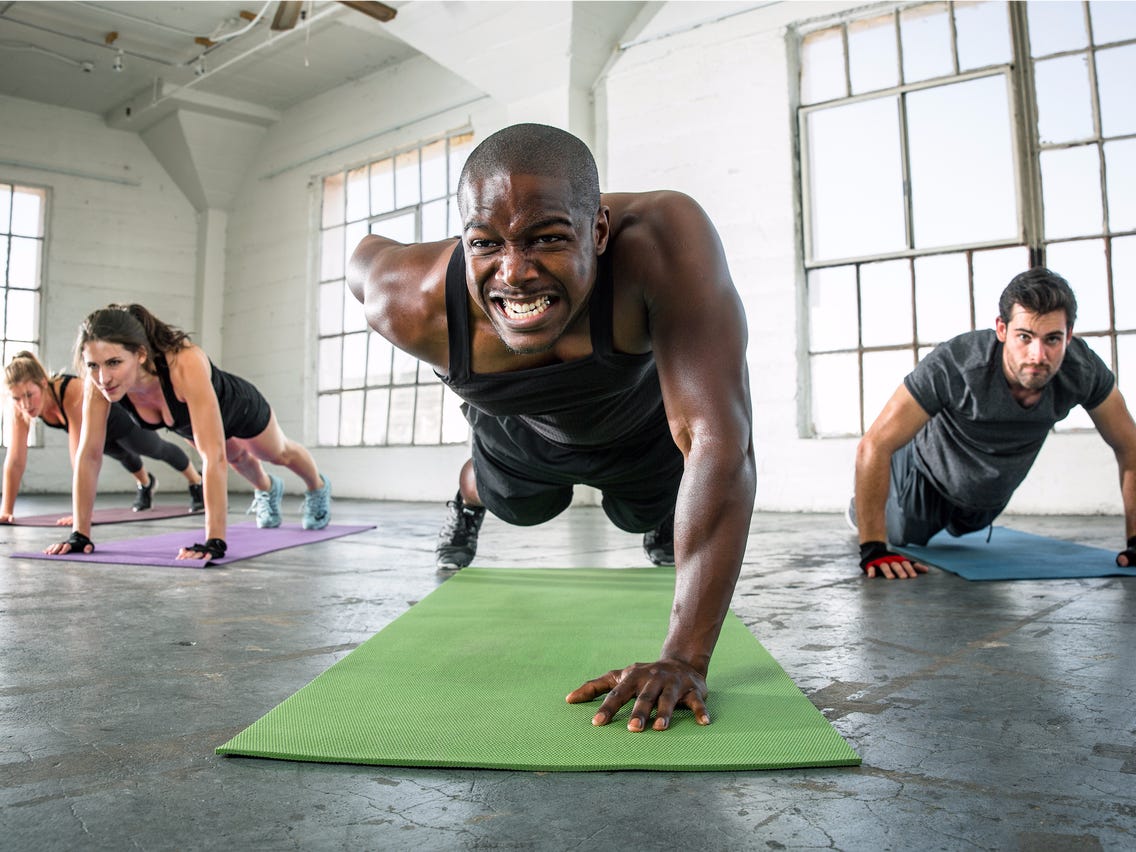
Menopause exercise doesn't need to end when you stop having menstrual periods. There are plenty of options to continue training after menopause. It's important to know that there are different phases and different symptoms to look out for. This will allow you to design a program that meets your specific needs.
Stretching
Menopause brings stiffness to the joints, which can lead to discomfort and pain. Regular stretching is important to maintain flexibility and prevent straining muscles. Tai-Chi yoga and yoga are excellent options to improve flexibility and balance your body. They have also been shown in studies to improve the quality and health of post-menopausal women's lives. You should also warm up before stretching to avoid injury.
Japan has found that ten minutes of daily stretching could help alleviate some symptoms of depression and menopause. This study was done on 40 Japanese women between the ages of 40 and 60. Researchers aren't sure why stretching can improve symptoms but they recommend it.
Strengthening
One side effect of menopause that is common is the loss or reduction in muscle mass. This can be prevented through strength training exercises. Specifically, women should focus on exercises that strengthen the thighs and core. These exercises should only be repeated three times, each time for thirty seconds. A local gym can be a great option for women. Pilates exercises are especially effective in strengthening deep-stabilizing muscles. Other exercises that improve muscle strength include the sit-ups or lunges.

One way to reduce symptoms related to menopause is to perform cardiovascular exercises. While estrogen is good for the heart in younger years, it can make a woman more susceptible to heart disease. The side effects associated with menopause like mental fogginess and sleep problems can be alleviated by exercises that increase the heart rate.
Cardio
Cardio exercise is good cardio for your entire body. It's especially useful for women going into menopause. Cardio workouts increase circulation, improve metabolism, and help with balance and coordination. They can lower your risk for falls and fractures. These exercises also help women live longer by preserving their stamina and flexibility. To avoid injury, women must start slowly and increase the intensity of their workout.
Women go through significant emotional and physical changes during menopause. The ovaries stop making estrogen as part of the transition to menopause. Loss of estrogen can increase the risk of stroke, heart disease, and osteoporosis. It also reduces HDL cholesterol and LDL cholesterol. Women who exercise regularly are less likely gain weight during menopause.
Weight-bearing
Menopause is a time when weight distribution changes and women can put on a few pounds. The belly is where this extra fat is stored. These women should work out daily to burn more calories that they take in. This can help women lose extra weight.
Women should choose moderate-intensity activities such as walking. Indoor malls are great places to walk, and they often allow for early access for walkers. Participating in group fitness classes is a good idea for women. Regular exercise can help to avoid menopause-related health issues.

Mind-body therapies
The evidence is growing that complementary and alternate therapies may be beneficial for women going through menopause. Research on yoga, meditation, and breath-based therapy have shown improvements in menopausal symptoms. Some also reported improvements in mood, sleep, and musculoskeletal pain. Although these findings show promise, the majority of studies suffer from methodological limitations, making it difficult to draw firm conclusions about the effectiveness of these treatments.
It is unclear whether these mind-body menopause therapies are effective. To examine the long-term effects of these mind-body therapies for menopause and to understand their underlying mechanisms, large clinical trials will be needed.
FAQ
How to Make an Exercise Plan?
It is important to establish a routine. It's important to have a plan for each day. This helps you plan ahead, and it will also help you avoid procrastination.
The second thing is to ensure that you have plenty of variety in your workout. You don't want to become bored with exercise because then you won't stick with it.
Also, you need to keep track on your progress. It's crucial to track your weight changes over time.
It's easy for people to lose motivation when they start by losing weight. However, it's much harder to stay motivated when you gain too much weight.
You should find a balance between weight gain and weight loss. You won't be able to exercise if your current weight is not comfortable.
What is the best type of exercise for busy people to do?
The best way to stay fit is by doing exercises at home. You don't have to join a gym or go to a fitness center to stay fit. You can perform simple exercises at your home without needing expensive equipment.
A pair of dumbbells and a mat are all you need.
The most important thing is ensuring you are consistent with your workouts. You could lose motivation if your workouts are not consistent for more than a few consecutive days.
Try lifting weights three days per week. This is a great place to start. You could do push-ups and pull-ups as well as squats, lunges or push-ups.
Once you have mastered these basic movements, you can move on other types of exercises such as running, jumping rope, skipping, yoga, Pilates, dancing, cycling, swimming, weight training, tennis, golf, hiking, basketball, football, soccer, volleyball, badminton, squash, etc.
You should choose an exercise program that suits your life. Exercises that take too much energy, for example, might not be a good fit for someone who works long hours.
If you are a night owl you should exercise during the evening instead of in the early morning.
Pay attention to your body. Don't be afraid to stop when you get tired.
What foods should I consume during an intermittent fast to lose weight
Cutting out carbs is the best way to lose weight. This means that you should cut out carbohydrate-based foods like bread, pasta and rice.
Protein will also keep you fuller for longer so try to limit how much you eat. So you won't feel hungry as often.
Instead, choose foods rich in healthy fats. These foods will keep you full for hours after you eat them.
You should ensure you drink plenty of water. Water can help you lose fat by keeping you hydrated.
It is possible that you will find yourself craving these foods while you are fasting. This doesn't mean that you must give in to your cravings. If you do, you could gain more weight than you lost.
You can avoid overeating by being mindful of how much water you consume each day. Instead of reaching for another snack, sip a glass of water when you feel hungry.
This might sound counterintuitive, but it's actually been proven to help you slim down. A study published online in Obesity revealed that people drank more plain water than they did sugary drinks.
Plain water was also shown to reduce hunger. If you want to lose weight, avoid sweetened beverages and drink water.
It doesn't take much to lose weight. Instead, focus on making small changes to your lifestyle.
You can swap your breakfast sandwich for an oatmeal bowl. Alternately, you can swap your afternoon cookie with a piece de fruit.
These simple swaps can add up over time to help you shed excess weight without spending hours in your kitchen.
Would cardio exercises make me lose weight fast?
Cardio exercises are great at burning calories but don't help you lose weight. It depends on how much fat you have stored and what kind of exercise you do.
Cardio exercises might not be enough to lose excess weight if your body is overweight.
You need to combine them with dieting and other types of exercise.
If you are looking to lose weight quickly, cardio exercises such as running and jogging can be helpful. These exercises burn calories more than any other type.
You should train resistance to gain muscles, not fat. Resistance training requires the use of free weights and machines as well as elastic bands.
Combine cardio exercises and resistance training to quickly lose weight.
Combining cardio and resistance training is a great way to quickly lose weight.
Statistics
- A 12-week study in 20 women with obesity found that walking for 50–70 minutes 3 times per week reduced body fat and waist circumference by an average of 1.5% and 1.1 inches (2.8 cm), respectively (healthline.com)
- According to Harvard Health, it's estimated that a 155-pound (70-kg) person burns roughly 112 calories per 30 minutes of weight training (5). (healthline.com)
- One 6-month study showed that simply doing 11 minutes of strength-based exercises 3 times per week resulted in a 7.4% increase in metabolic rate, on average. (healthline.com)
- It's estimated that half of all American adults attempt to lose weight every year (1Trusted (healthline.com)
External Links
How To
How to lose weight quickly and without doing any exercise
Fast weight loss is possible by eating fewer calories than you burn. This will make your body burn more fat to generate energy. You will see some muscle shrinkage if your body doesn't consume enough calories. Even if you do not exercise while on a diet, you can still lose weight. However, you will likely lose more muscle mass.
It is possible to lose weight fast and not have to exercise by reducing your calorie intake. Many people believe that they need to reduce their food intake in order to lose weight. However, this is not true. If you are looking to lose weight, it is important to consume fewer calories per day than you burn. What should you eat daily? It all depends on the type of activity that you do each day. A person who walks 3 miles a day would need only 2,500 calories per day. One who sits at the desk all day would require 1,600 calories daily. An individual who exercises, like lifting weights, would consume around 2,000 calories each day.
If you are trying to lose weight, you should try to reduce your caloric intake. Many people believe they should consume less food, as they feel they are starving. However, this is not the truth. Your body doesn’t care if you’re hungry or full; it simply wants to work properly. To get rid of extra pounds, you need to keep track of your calorie consumption. There are many apps available online that allow you to monitor your calorie intake. You can use these apps to monitor your calorie intake, such as MyFitnessPal, Calorie Counter and LoseIt!